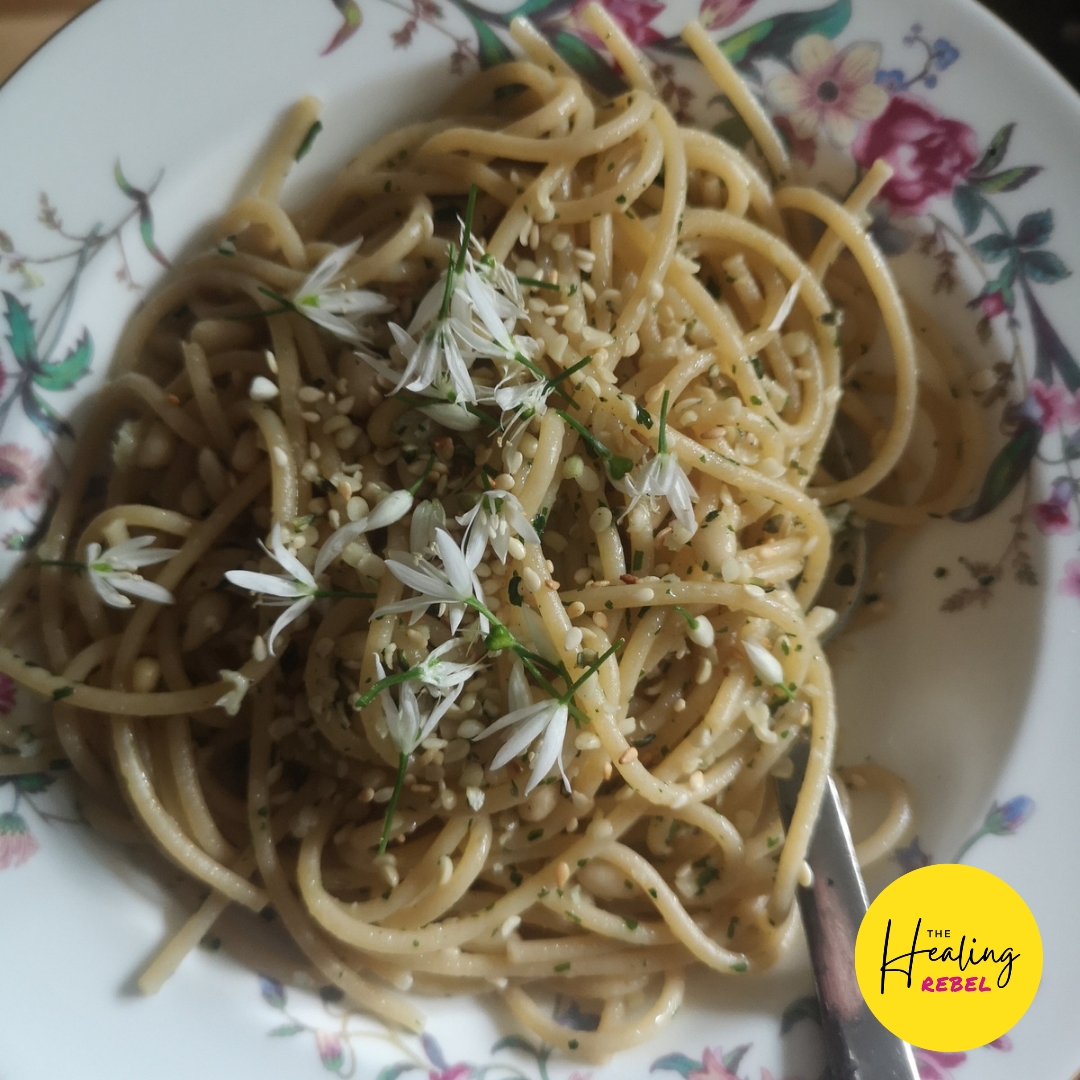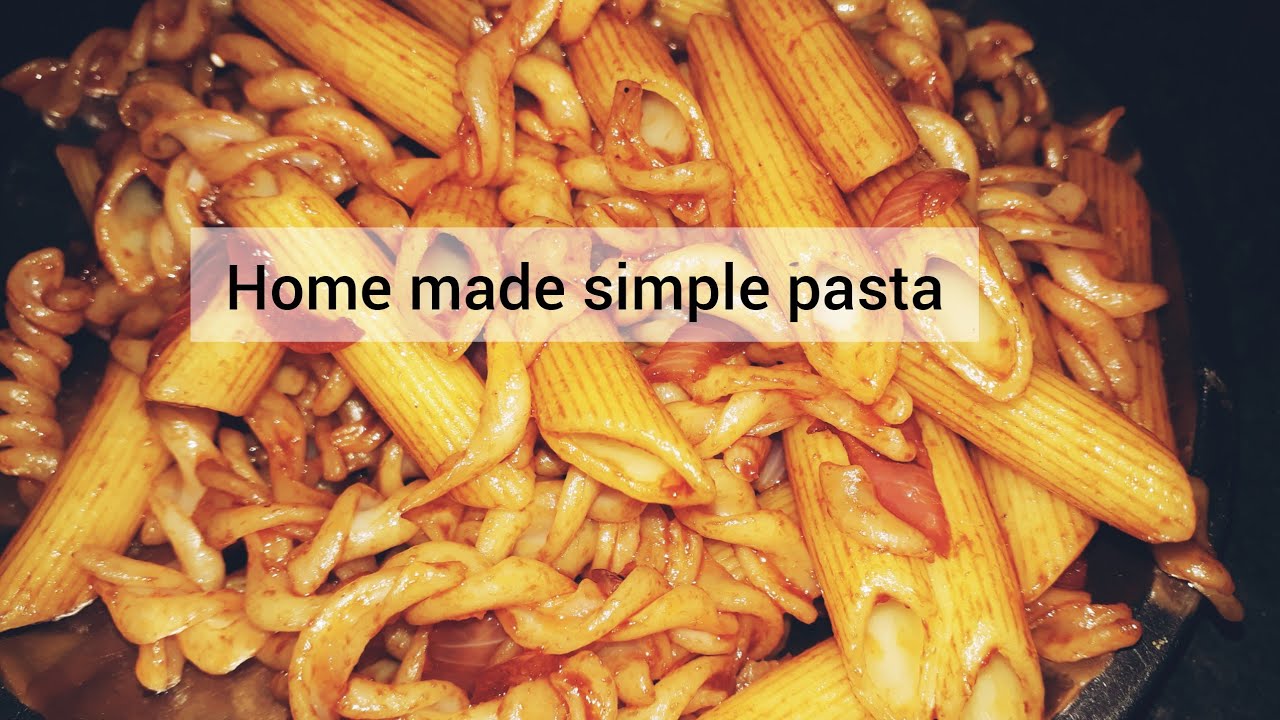Welcome to the world of pasta cooking! If you've ever marveled at a perfectly al dente plate of pasta in a restaurant and thought, "I wish I could make that at home," you're in the right place. Cooking pasta doesn't have to be complicated. With just a few simple tips and tricks, you can elevate your home cooking game and impress your family and friends. Let’s dive into the essentials so you can whip up delightful pasta dishes in no time!
Choosing the Right Type of Pasta

When it comes to making pasta, the first crucial step is selecting the right type of pasta for your dish. There are dozens of pasta shapes and varieties available, each suited for different sauces and recipes. Here’s a handy guide to help you make the best choice:
- Long Pasta: Ideal for lighter sauces. Think spaghetti, fettuccine, or linguine. These types pair beautifully with olive oil, tomato sauces, or simple garlic and herb blends.
- Short Pasta: These shapes, like penne, fusilli, and rigatoni, are perfect for heartier sauces. Their crevices and surfaces cling to sauces wonderfully, making every bite flavorful.
- Stuffed Pasta: Types like ravioli and tortellini are fantastic choices when you want to impress! Fill them with cheese, meat, or vegetables for a delicious meal that’s sure to wow your guests.
- Whole Wheat and Gluten-Free Options: For those looking for healthier choices, whole wheat pasta offers more fiber. Alternatives like chickpea or rice pasta are great for gluten-free diets.
When choosing pasta, consider the sauce you'll be using:
| Type of Sauce | Recommended Pasta Shapes |
|---|---|
| Light and oil-based (e.g., Aglio e Olio) | Spaghetti, Angel Hair |
| Rich and creamy (e.g., Alfredo) | Penne, Fettuccine |
| Chunky and hearty (e.g., Marinara) | Fusilli, Rigatoni |
| Stuffed (e.g., Pesto or Bolognese) | Ravioli, Tortellini |
Another fun fact? Different pasta shapes can enhance the eating experience! For example, spirals (like fusilli) trap more sauce, making each bite a burst of flavor, while the smooth surface of a spaghetti strand allows for a delightful 'slurp' factor.
So, take a moment to think about what you're in the mood for and choose a pasta type that will complement your sauce. It’s all part of the fun in creating a dish that not only tastes great but looks appealing too. Happy cooking!
Also Read This: Understanding the Rumble Website and Its Popularity as a Video Platform
3. Essential Tools for Cooking Pasta

Before you dive into cooking your pasta, it’s important to have the right tools at hand. Don't worry; you don't need a fancy kitchen set-up to make delicious pasta! Here’s a list of essential tools that can make your pasta cooking experience smoother and more enjoyable:
- Large Pot: A big pot is necessary to give your pasta enough room to cook evenly. Aim for one that holds at least 4 to 6 quarts.
- Colander: This little gem is perfect for draining your pasta once it's cooked. Look for one that has a sturdy handle and plenty of holes for quick draining.
- Wooden Spoon: A trusty wooden spoon is ideal for stirring the pasta while it cooks. It won’t scratch your pot and helps to keep the pasta from sticking together.
- Measuring Cup: Measuring your water accurately is key. A standard measuring cup will help ensure you have the right amount of water for your pasta.
- Timer: Timing is crucial when cooking pasta. A simple kitchen timer (or the timer on your phone) will help you keep track of cooking times.
- Fork or Tongs: These handy utensils can be used to test the pasta's doneness or to serve the pasta after cooking.
With these tools in your arsenal, you’ll be well-equipped to whip up a delicious pasta dish. Remember, while having the right tools can help, it’s your passion for cooking that will truly elevate your pasta game!
Also Read This: How to Permanently Block Your Facebook Account on Dailymotion
4. Step-by-Step Guide to Cooking Perfect Pasta
Now that you’re set up with all your essential tools, let’s walk through the process of cooking perfect pasta! Follow these manageable steps, and you’ll have a delightful dish ready in no time.
- Boil the Water: Fill your large pot with water—about 4 to 6 quarts for every pound of pasta. Add a generous pinch of salt (this is crucial for flavor), and bring the water to a rolling boil over high heat.
- Add the Pasta: Once the water is boiling, add your pasta. Stir immediately to prevent the noodles from sticking together. Keep an eye on the pot as it can boil over quickly!
- Set the Timer: Check the cooking time on the pasta package and set your timer accordingly. It’s often a good idea to start checking a minute or two before the suggested time to ensure it doesn't overcook.
- Stir Occasionally: Give the pasta a gentle stir now and then to keep it from sticking. This helps to ensure even cooking throughout.
- Test for Doneness: When the timer goes off, use a fork or tongs to take a piece of pasta out of the pot. It should be 'al dente'—that perfect balance of cooked but still offering a little bite.
- Drain the Pasta: Carefully pour the pasta into your colander to drain the water. If you’re going to toss the pasta with sauce immediately, there’s no need to rinse it. Rinsing washes away the starch that helps the sauce adhere.
- Combine with Sauce: If you’re using sauce, add it to your pasta right away. A quick toss will ensure every noodle is coated in flavor!
And there you have it—a simple and straightforward guide to cooking perfect pasta every time! Enjoy your creation, whether it’s a comforting bowl of spaghetti or a zesty linguine dish. Your pasta adventure has just begun!
Also Read This: Tips for Writing Fast and Beautifully with Dailymotion Video Guides
5. Common Mistakes to Avoid When Cooking Pasta
Cooking pasta might seem straightforward, but there are a few common pitfalls that can turn your culinary masterpiece into a sticky disaster. Let’s dive into some of the most frequent mistakes and how to sidestep them like a pro!
- Not Using Enough Water: One of the biggest mistakes is cooking pasta in too little water. This can cause the pasta to release too much starch, making it gummy. A general rule is to use 4-6 quarts of water for every pound of pasta.
- Not Salting the Water: Ever heard the saying, "salt your pasta water like the sea"? Well, there’s truth to it! Salting the water enhances the pasta's flavor, so don’t skip it. A couple of tablespoons of salt should do the trick.
- Cooking Pasta at the Wrong Temperature: You should start cooking pasta at a rolling boil. If the water isn’t hot enough, the pasta can become mushy. If the boil isn’t consistent, you might also end up with unevenly cooked pasta.
- Overcooking Pasta: Nobody likes a soggy noodle! Make sure to follow package instructions for cooking times, but keep an eye on your pasta as it cooks. Al dente should be your goal—firm but tender!
- Rinsing Pasta: This is a common mistake, especially when you want to cool it down for a salad. Rinsing removes the starch that helps sauces adhere to the pasta. Instead, just drain it and toss it immediately with your sauce.
- Not Saving Pasta Water: Holding on to a cup of starchy pasta water can be a game-changer! You can use it to adjust the consistency of your sauce, adding a bit of that savory flavor to your dish.
By avoiding these mistakes, you’ll be well on your way to perfecting your pasta game. After all, a small tweak here and there can elevate your dish from ordinary to extraordinary. Happy cooking!
Also Read This: How to Make Crafts with Play-Doh Creative Video on Dailymotion
6. Delicious Sauce Pairings for Your Pasta
Now that you know how to cook pasta to perfection, it’s time to choose the right sauce to complement those delightful noodles. There’s a whole world of flavors out there, so let’s explore some classic and unique sauce pairings that can take your pasta to the next level!
| Sauce | Best Pasta Types | Flavor Profile |
|---|---|---|
| Marinara | Spaghetti, Penne | Tomato-based, tangy, herby |
| Alfredo | Fettuccine, Lasagna | Creamy, rich, cheesy |
| Pesto | Fusilli, Linguine | Herbaceous, nutty, bright |
| Arrabbiata | Penna, Rigatoni | Spicy, bold, tomato-based |
| Bolognese | Tortellini, Tagliatelle | Meaty, hearty, savory |
| Carbonara | Spaghetti, Bucatini | Creamy, smoky, savory |
Each of these sauces brings its own unique flair, and you can easily customize them. Want to spice things up? Add chili flakes to your marinara. Looking for a bit of zest? A squeeze of lemon in your pesto works wonders!
Remember, the magic lies in the balance of flavors and textures. Pairing your pasta with the right sauce not only enhances the dish but also brings out the best in your cooking skills. So grab your sauce of choice, and let’s dig in!
Also Read This: How to Do a Live Stream on Dailymotion: A Beginner’s Guide
7. Storing Leftover Pasta
So, you've whipped up a delicious batch of pasta, but what happens when you find yourself with a generous amount left over? Instead of letting it languish in the fridge, let’s talk about how to store your leftover pasta properly so it can be enjoyed later without sacrificing flavor or texture.
First things first: make sure your leftover pasta is cooled to room temperature. This step is crucial because putting hot pasta directly into the fridge can create condensation, leading to mushy leftovers. Once it’s cooled down, you can store it in a few ways:
- In Airtight Containers: Transfer your pasta to an airtight container. This keeps out moisture and prevents it from absorbing unwanted odors from the fridge.
- With Sauce vs. Without Sauce: If you’ve mixed your pasta with sauce, it’s best to store them together. This prevents the pasta from drying out. If it’s plain, consider storing the sauce separately to maintain its consistency.
- Use Ziplock Bags: For limited space in the fridge, ziplock bags can be a lifesaver. Squeeze out as much air as possible before sealing them to help prevent freezer burn if you choose to freeze the pasta.
Refrigeration: Leftover pasta can be stored in the fridge for up to 3-5 days. Just remember to mark the date on your container, so you don't forget!
Freezing for Future Enjoyment: If you have leftovers that you know you won’t eat within the week, consider freezing them. Pasta freezes surprisingly well! Wrap the portions in plastic wrap first, then place them in a freezer-safe container or bag. Label it with the date and type of pasta for easy reference later. You can expect your frozen pasta to maintain its quality for 1-2 months.
When you're ready to enjoy your frozen pasta, simply thaw it overnight in the refrigerator or use the microwave on a defrost setting. You can also toss frozen pasta directly into boiling water for a quick heat-up. Just remember that sauce might need a bit more time to warm through.
In summary, proper storage can significantly impact the quality of your leftover pasta, so be mindful of how you keep it. Your future self will thank you!
8. Conclusion and Final Tips for Home Chefs
Congratulations, pasta aficionado! You've journeyed through this quick and easy pasta cooking tutorial, and now you’re well-equipped to tackle your pasta cooking adventures. Let’s wrap things up with some final tips to enhance your home cooking experience.
- Experiment with Flavors: Don’t be afraid to mix things up! Try different herbs, spices, and vegetables to create unique pasta dishes that suit your palate.
- Master the Art of Sauces: A homemade pasta sauce can elevate your dish from good to extraordinary. Consider trying a simple marinara, a rich Alfredo, or a zesty pesto.
- Don’t Overcook: This cannot be stressed enough—al dente is your friend. Keep tasting your pasta as it cooks to achieve that perfect bite!
- Savor the Process: Cooking should be enjoyable. Don’t rush through it! Take time to appreciate each step, from boiling water to the aroma of fresh ingredients sizzling in your pan.
- Invite Friends to Cook: Turn a simple pasta night into a gathering. Cooking is more enjoyable when shared with good company, so invite friends over and have fun together.
In conclusion, remember that cooking is all about creativity and personal flavor. With the basics under your belt and these tips in hand, the possibilities are endless. So grab your ingredients, sharpen those knives, and get ready to impress yourself and your loved ones with your newfound pasta prowess!
 admin
admin








